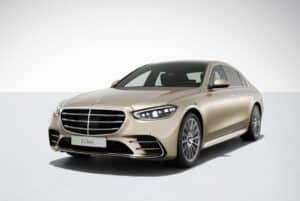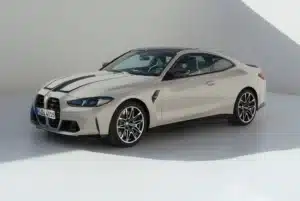
A Chinese electric vehicle (EV) manufacturer is quietly making inroads and building its dreams in India as the country gets ready to welcome international EV giants like Tesla. Build Your Dreams, or BYD, recently defeated Tesla to take the top spot as the world’s largest electric vehicle manufacturer. Now, it wants to make a significant impact in the midsize EV market in India.
With the help of its first two models, the e6 electric MPV and the Atto 3 electric SUV, the EV manufacturer, who has up until now maintained a low profile, managed to lead the midsize EV segment in sales in 2023. The Seal EV, the company’s most recent product, appears to be BYD’s best investment, though.
The BYD Seal electric sedan, which made its debut in March and costs ₹41 lakh (ex-showroom) more than most midsize EV’s in India (it can also go up till ₹53 lakh). In the first month of its release, it has already received over 800 bookings, indicating that it will likely become BYD’s most popular model in this market. Will it enable BYD to become one of the nation’s most well-known foreign EV manufacturers? This is our in-depth review of the Seal EV, covering all of its claimed features.
BYD Seal: Exterior, Variants and Colors
Last month, BYD launched the Seal EV in India with three different versions: Dynamic, Premium, and Performance Range. The first two versions have rear-wheel drive, while the top-tier version is exclusively available with all-wheel drive. You can choose from four exterior colors: Arctic Blue, Aurora White, Atlantis Grey, and Cosmos Black. There are no dual-tone options available.
When you first see it, the Seal EV looks sporty, like a performance sedan with a low-slung profile. It has some unique design features. The front has sharp LED DRLs, and beneath them are illuminated DRL patterns shaped like waves, inspired by the ocean.

The car also has U-shaped LED headlights, a closed-out grille, and a swooping bonnet, giving it an aggressive appearance. In the back, BYD kept it simple with connected LED tail lights featuring dot matrix patterns. Looking from the sides, you can see its aerodynamic design, highlighted by the sloping roofline. It even has flush-door handles.
The entry-level model’s 19-inch alloy wheels are one size smaller than those of the Seal EV. Those who frequently deal with damaged roads or large speed breakers may find the 145 mm of ground clearance, which is among the lowest in the segment, to be an inconvenience.
There is ample room inside thanks to the 2,920 mm wheelbase. The boot has 400 liters of space. It also has a cargo hold with a capacity of about 50 liters, which is probably where the EV’s charging cables will be kept.
BYD Seal: Interior and Features
Almost everything in the Seal EV’s cabin is made of high-quality soft-touch materials. In addition to leather, the dashboard is expertly stitched with suede material. With their prominent side bolsters, the front seats are cozy and will keep you snug when making fast maneuvers. The front seats also have electronic adjustments and come equipped with heating and cooling features.
The large 15-inch touchscreen infotainment system, which houses the majority of the controls you’ll need, is the centerpiece of the cabin, though. It has good responsiveness, works with wireless Android Auto, and still has BYD’s signature party trick—a switch that allows you to flip it from landscape to portrait mode.
The majority of the features are operated by the display, which also has a button specifically for adjusting the dashboard’s AC vents. While driving, large touchscreen infotainment systems can be a little distracting. Sometimes on our drive, the glare of the sun made it hard for us to read.
The 10.25-inch digital driver display shows important drive-related data, such as battery charge level and range, which is the most crucial piece of information. We did think the screen was a little small, though, considering how much information it offers. Additionally, it has a three-spoke steering wheel with mounted controls for media control, phone access, and other functions.

The Seal EV’s center console has a systematic layout of buttons and levers that makes it simple to use. This location houses the traction control, drive mode selections, start/stop button, and a tiny crystalline gear shifter that appears to be Volvo-inspired. Additionally, BYD has included two wireless charging slots for phones in the Seal EV.
There are additional hard-to-reach charging ports beneath the dashboard. Adjacent to the driver armrest are two cup holders, one of which can be pressed to suit medium-sized water bottles or even larger glasses. Additionally, there is a place to store little things beneath the center console.
According to BYD, the fixed glass unit that makes up the panoramic sunroof above helps to block out heat on hot summer days. It functions somewhat, but during our drive, it did get pretty hot inside after a few hours. Purchasing a cover accessory is advised in order to block out the sun.
Large headrests and the ideal inclination ensure that all three seats are comfortable for extended travel. Three people in the backseats, though, might be a close fit. The bottom has charging ports and dedicated AC vents, and there are two cup holders on the armrest.
BYD Seal: Performance, Drive Dynamics
When driving the Seal EV, one will immediately be struck by how heavy the vehicle, the steering wheel, and even the pedals are. When driving a BYD Seal EV, there’s a certain assurance and security. However, that has no impact whatsoever on its performance.
In the Premium variant, 308 bhp of power and 360 Nm of peak torque are available. Even though reaching the triple-digit mark is easy, the Seal EV still feels like it wants to go farther, so that is still quite a handful. The top-spec Performance Range can produce an incredible 670 Nm of peak torque and 522 bhp of power for those seeking even more excitement.
The Seal EV’s aerodynamics and remarkable drag coefficient of 0.219 allow it to outperform some of India’s luxury electric cars and maneuver through traffic with ease. It takes less than six seconds to go from zero to 100 kmph.
The suspension system and the large wheels does a good job of keeping the car grounded and providing a comfortable ride. Although we first believed that the Seal EV’s low ground clearance might be a problem on uneven roads or speed bumps, according to reports it never once scraped its undercarriage. That does not, however, imply that one can avoid significant potholes or speed bumps.

Even when the Seal EV is pushed around corners, the hefty steering wheel responds quite well. As quiet as it gets while moving, the cabin provides a secure enclosure that muffles the majority of outside sounds. With five-star ratings from both ANCAP and Euro NCAP, the Seal EV is among the safest electric vehicles available in India. Some of the most important safety features are a head-up display, nine airbags, a 360-degree camera that can record while moving, and level 2 ADAS technology. Discover more automotive excellence with our review of the 2024 Acura TLX.
BYD Seal: Battery, Range and Charging
The 82.56kWh battery offers 650km of WLTP range and constant fast charging capability. The Seal’s Premium and Performance variants have a maximum fast charging capacity of 150kWh and an AC charging capacity of 7kWh. 110kWh is the maximum that the base Dynamic variant can manage.
Nevertheless, we rarely find chargers with a capacity greater than 60 kWh on Indian highways. In that scenario, a full charge ought to take roughly 1.5 hours.
Although the top-spec AWD variant is a good deal, the Premium variant, with its additional 70 km of range, is also a compelling option.
BYD Seal Specifications
| Features | Specifications |
| Variants | Dynamic, Premium, Performance Range |
| Drive Train | Rear-wheel drive (Dynamic, Premium); All-wheel drive (Performance Range) |
| Battery Capacity | 82.56 kWh |
| Range (WLTP) | 650 km |
| Maximum Power | Dynamic & Premium: 308 bhp; Performance Range: 522 bhp |
| Peak Torque | Dynamic & Premium: 360 Nm; Performance Range: 670 Nm |
| 0-100 kmph | Less than 6 seconds |
| Fast Charging Capacity | Dynamic: 110 kW; Premium & Performance Range: 150 kW |
| AC Charging Capacity | 7 kW |
| Colors | Arctic Blue, Aurora White, Atlantis Grey, Cosmos Black |
| Ground Clearance | 145 mm |
| Wheelbase | 2,920 mm |
| Boot Space | 400 liters |
| Infotainment System | 15-inch touchscreen, rotatable |
| Digital Driver Display | 10.25-inch |
| Safety Features | Head-up display, 9 airbags, 360-degree camera, Level 2 ADAS |
| Starting Price (ex-showroom India) | ₹ 41 lakh |
BYD Seal: Price and Final Verdict
The BYD Seal’s performance to price ratio is so skewed that the BMW i4, which is more than 50% more expensive than the Seal, is the next sporty electric sedan with comparable performance. Not even an electric versus gasoline car comparison is being made here. Then what is the catch? Well, it appears that none exist. The car is incredibly feature-rich, rides like a European car, and has an amazing appearance.
Some may contend that BYD’s low prices are the result of Chinese subsidies, but from the consumer perspective, who wouldn’t want to pay less for a high-quality product? That’s what BYD is arguing for, to affluent Indians who want to purchase electric sedans. We believe we know the answer based on the 200 bookings BYD made in the first day after the Seal’s launch.


